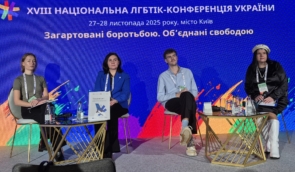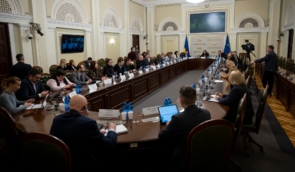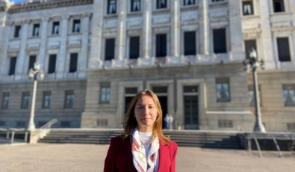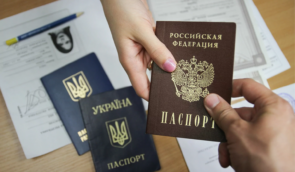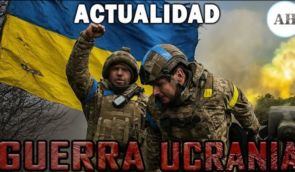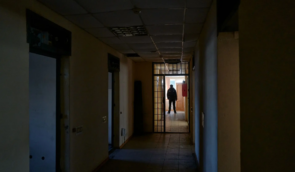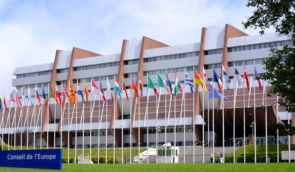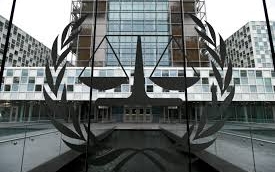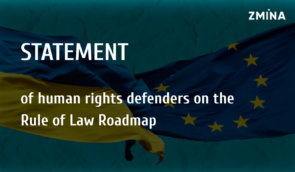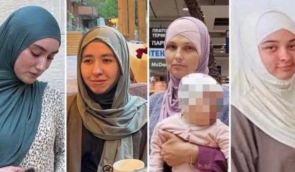10 years of occupation of Crimea: human rights defenders on justice processes and punishment of the perpetrators
How the occupiers turned Crimea into a peninsula of fear and how it lives now, discussed the participants of the Crimea Platform during the media marathon “10 years of Russian aggression in Ukraine. The path to justice”, which was organised by Ukraine 5 AM Coalition. Simultaneously, when in the capital of Ukraine in 2014, protesters were shot on Independence Square, the first military personnel without identification marks appeared in Crimea. Thus began the illegal annexation of the peninsula by the Russian Federation.
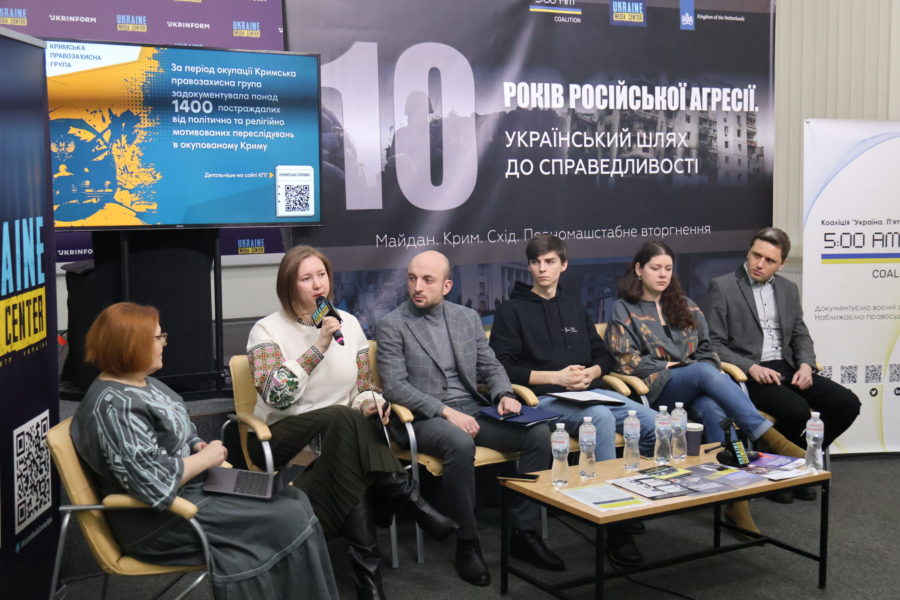
In response to the resistance of the local population to the occupation, the Russian Federation built a large-scale system of persecution in Crimea; which in ten years turned into a well-coordinated repressive mechanism involving many perpetrators.
The head of the board of the Crimean human rights group, Olha Skrypnyk, reported that her organisation documented 84 thousands court hearings in politically motivated cases against Ukrainian citizens, and 600 judges of the occupation courts were included in the prosecution.
“This is a really large-scale system, and its scale is indicated by the numbers of people who are involved in it. It is important for us to document the facts not only regarding those who suffered, but also those who are directly involved in these persecutions,” said the human rights defender.
According to Skrypnyk, we currently know about two hundred political prisoners of the Kremlin on the peninsula. These are Crimeans who disagreed with the Russian occupation, engaged in journalistic or human rights activities, or belonged to religious groups persecuted by Russia. Many of them are tortured and do not receive proper medical care.
In general, for ten years the Russian military and occupation administrations never stopped the pressure on the local population in Crimea. After a full-scale invasion, it only intensified: the aggressor country does not forgive neither adults nor children.
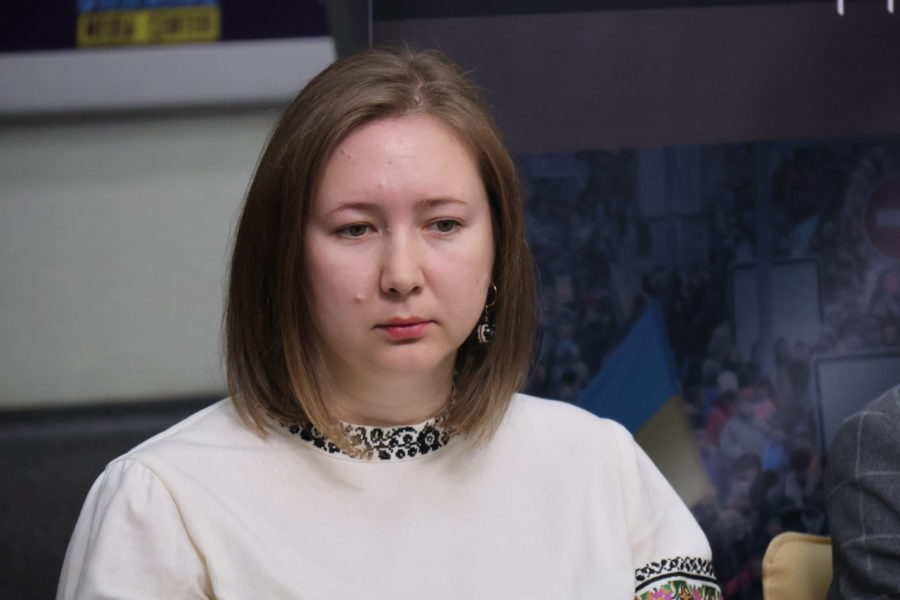 Olha Skrypnyk
Olha Skrypnyk“Starting from the first grade, children are told that they have to defend “their own country”. By “own country”, of course, they mean the Russian Federation. Russia promotes the war and service in the armed forces every day. Once the full-scale invasion began, the speed and scope of this policy started to increase. Currently in schools there are thematic lessons, such as “Talking about the important.” Russian servicemen are invited to schools, they tell children about the goals of the so-called “SMO” and encourage children to join rallies in support of the Russian military,” said Mariia Sulialina, the head of the Centre of civil education “Almenda”.
Human rights defenders note the large scale of not only the militarization of Ukrainian children on the temporarily occupied peninsula, but also their illegal transfer.
“After the full-scale invasion, Russia began the mass deportation of Ukrainian children and their adoption into Russian families. But it all started with Crimea. At the time of the occupation, there were about four and a half thousand orphans and children deprived of parental care in Crimea. Ukraine has no information about the fate of these children – access to the territory is closed, says Mykyta Petrovets, a lawyer at Regional Centre for Human Rights. — We have reasonable grounds to assume that some of these children were included in the Russian registers. This allows their adoption by Russian families. For example, about a hundred such children were adopted by Russian families, and as a result, they were moved to the territory of the Russian Federation, to the Trans-Baikal region, seven thousand kilometres from Crimea.”
The forced passporting of the local population and the attempts of the occupiers to bureaucratize the processes in the occupied territories as much as possible create a huge burden on the Ukrainian authorities, in particular, due to the lack of an administrative procedure for the recognition of acts of marital status (birth, marriage, death).
“The courts are simply overwhelmed with cases, they don’t have enough resources. When crimes are committed in relation to some small part of people, it is clear that it is possible to prove these crimes and bring the perpetrators to justice. But when there are tens and hundreds of thousands of these victims, let’s be realistic. This can’t be done in any adequate time frame,” says Oleksii Tilnenko, the head of the board of CrimeaSOS.
Along with the increase in the number of investigations, human rights defenders and lawyers note new opportunities for establishing justice and further bringing to justice those who committed war crimes in the occupied Crimea during the ten years of occupation.
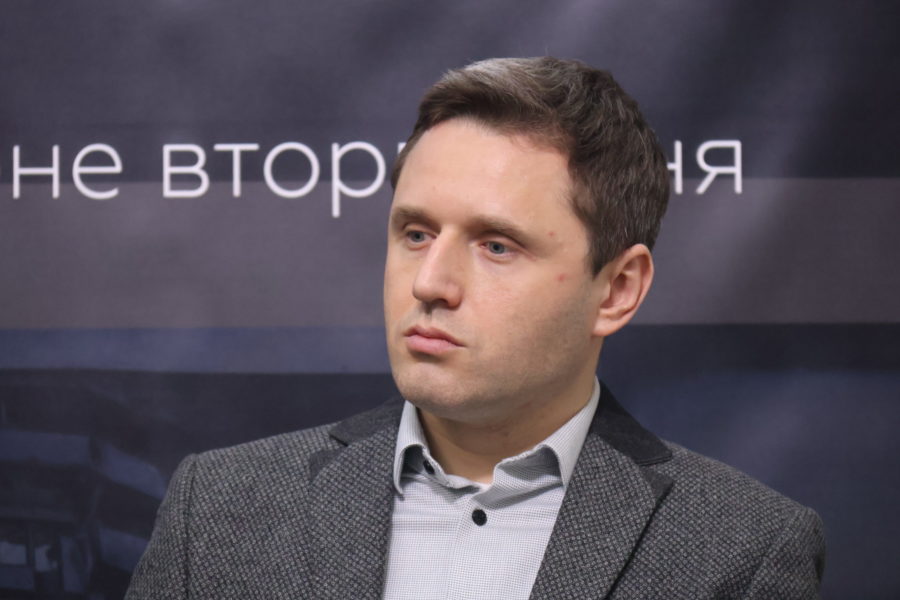 Oleksii Tilnenko
Oleksii Tilnenko“Considering that many of the crimes committed in Crimea are not only war crimes, but also crimes against humanity, we, with non-governmental organisations and international partners, interacted with the International Criminal Court even before 2020. A full-scale invasion has activated this work, says Vitalii Sekretar, the first deputy head of the Prosecutor’s Office of the Autonomous Republic of Crimea and the city of Sevastopol. — We are trying to highlight as many areas as possible, so that the issues of Crimea, offences and war crimes that are happening on the territory of Crimea, do not remain only at the national level, but that they receive an assessment in international courts as well.”
According to him, although Russia’s full-scale invasion of Ukraine cut the physical connection with other parts of Ukraine, at the same time law enforcement agencies have new opportunities for conducting investigations, which did not exist in 2014. In particular, technology companies are helping to find new evidence.
For more information: see the record of the discussion in Ukrainian and English.
Cover photo: REUTERS/Baz Ratner
If you have found a spelling error, please, notify us by selecting that text and pressing Ctrl+Enter.

